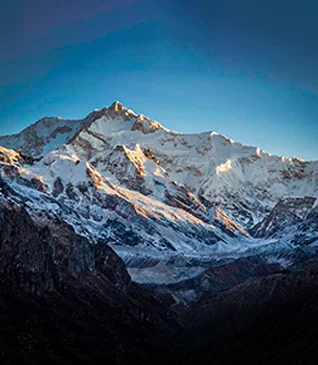Trekking as an adventure sport has gained huge traction in the last couple of years. It is the love for adventure and exploration that has led people into some of the most breathtaking albeit challenging terrains on Earth. However, as thrilling as these experiences may be, they also come with inherent risks that demand respect and preparation. The movies “Touching the Void” and “Into Thin Air” are prime examples of it.
These cinematic masterpieces serve as cautionary tales, highlighting the critical importance of safety measures and meticulous planning in outdoor pursuits. As we unravel the narratives of these treacherous adventures, we uncover invaluable insights that can improve our own trekking experiences. Join us on this cinematic journey as we glean wisdom from the silver screen and strive to navigate the wilderness with vigilance and preparedness.
Into Thin Air - Recounting The Tragic Events during a Mt. Everest Expedition

"Into Thin Air" offers a gripping portrayal of the ill-fated 1996 Mount Everest expedition, where a commercial climbing team faced unprecedented challenges and ultimately succumbed to tragedy. Directed by Robert Markowitz and based on Jon Krakauer's best-selling book, the film immerses viewers in the harsh and unforgiving environment of the world's highest peak.
The story unfolds against the backdrop of commercialization and overcrowding on Everest, as adventure-seekers from around the globe converge on the mountain in pursuit of their dreams. Among them is journalist and mountaineer Jon Krakauer, who joins an expedition led by seasoned guide Rob Hall. As the team ascends the treacherous slopes of Everest, they encounter a series of setbacks, including delays, adverse weather conditions, and dwindling oxygen supplies. Despite these challenges, they press on, driven by their determination to reach the summit.
Lessons to Learn from “Into Thin Air”
Through its gripping narrative and stunning visuals, "Into Thin Air" serves as a cautionary tale, urging viewers to heed the lessons of history and approach mountainous terrain with the utmost caution. In the shadow of tragedy, the film underscores the importance of proper preparation, sound decision-making, and above all, a profound reverence for the awesome power of nature.
Touching the Void - Portrayal of Survival Amidst Perilous Conditions

This is a gripping documentary-style film directed by Kevin Macdonald, based on the autobiographical book by Joe Simpson. The film recounts the incredible true story of Simpson and his climbing partner, Simon Yates, as they embark on a treacherous expedition to climb the uncharted west face of Siula Grande in the Peruvian Andes in 1985.
As the climbers ascend the imposing mountain, they encounter a series of challenges, including unpredictable weather, difficult terrain, and technical difficulties. However, their journey takes a terrifying turn when Simpson suffers a severe leg injury during their descent from the summit. Stranded on an icy ledge, with no hope of rescue and facing near-certain death, the climbers are forced to make agonizing decisions in a desperate bid for survival. Yates, faced with the impossible task of lowering Simpson down the mountain on a makeshift rope, is forced to make a fateful decision: to cut the rope and save himself or risk both their lives by attempting to continue the descent together. In a heart-stopping moment of desperation, Yates makes the agonizing choice to cut the rope, sending Simpson plummeting into a crevasse. Miraculously, Simpson survives the fall but is left stranded and alone in the unforgiving wilderness with no food, water, or means of communication.
Lessons to Learn from “Touching the Void”
Touching the void underscores the importance of preparation, especially when you are going in a remote and challenging environment. It presents a stark reminder of the critical nature of decision-making in life-or-death situations, effectively communicating and also the importance of mental resilience along with physical.
Our Safety-First Approach

At Trek The Himalayas we prioritize safety above everything else. With a wealth of expertise and a commitment to excellence, we have established ourselves as a trusted and safest leader in the field of adventure. Our safety measures include:
1. A team of experienced and certified guides who possess intimate knowledge of the Himalayan terrain and local conditions. These professionals undergo rigorous training to ensure they are equipped to navigate the challenges of high-altitude trekking while keeping trekkers safe at all times.
2. Before each expedition, Trek The Himalayas conducts thorough risk assessments to identify potential hazards and formulate effective emergency response plans.
3. From sturdy trekking poles and durable tents to insulated sleeping bags and weatherproof clothing, every item is carefully selected to withstand the rigours of the Himalayan terrain and enhance the safety and comfort of trekkers.
4. Recognizing the risks associated with high-altitude trekking, Trek The Himalayas places a strong emphasis on acclimatization and gradual altitude gain.
5. Communication is paramount in ensuring the safety of trekkers. Our Tre Leaders and guides maintain open lines of communication with trekkers, providing guidance, support, and reassurance every step of the way.
As we've explored throughout this article, the inherent risks associated with trekking adventures and the fact that they require utmost planning and preparation. Whether you're a seasoned trekker or a novice explorer, prioritizing safety should always be your top concern. In the face of unpredictable circumstances, choosing a reputable company can make all the difference between a safe, enjoyable adventure and a perilous ordeal. So, as you plan your next trekking adventure, we urge you to prioritize your safety above all else.





.webp)










.webp)


